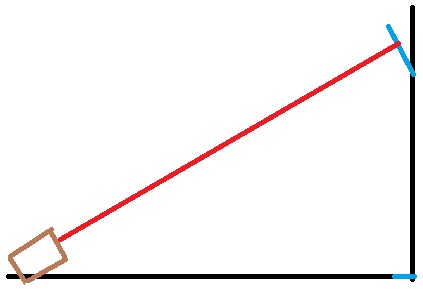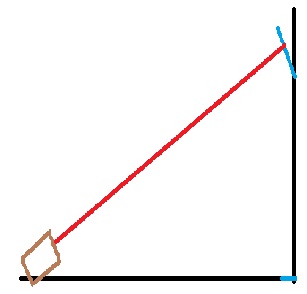This page posted on August 24th, 2014, rewritten June 2, 2021
This section is going to explore
some of the claims of relativity regarding length
contraction. Length
contractions are used to explain many phenomena; for example
the results of the Micheson-Morley experiment.
Earth is supposed to experience a small length
contraction in the directions of its motion around the sun
and this is just enough to justify the results of the
experiment. On the other hand,
relativity also claims, that for two observers moving
relative to each other, they “appear” to length contract
from each other’s perspective. Length contractions
have to either be real or apparent, Can they be both?
If we assume that contractions are ‘real’ for the
Michelson-Morley experiment (MMX), then Earth motion through
space also has to be ‘real’; that is, Earth’s motion in
space around the sun is not relative.
For the MMX, the time that it takes light to travel the path parallel to the motion depends on the actual length of the path; not on an apparent length. If length contractions are real and the true explanation for the results of MMX; then defeating length contractions is not very difficult, and there are multiple ways.
One way of defeating length contractions is by the figure shown below.

A laser
source is aimed at a mirror at an angle from the direction
of motion. The mirror reflects the light back to the
laser source where is detected by sensor. If the
system is length contracted as in the next figure, then the
mirror will not receive the light perpendicular to the
surface and it will not be reflected back to the
source.

If length contractions are
appearances, then this will not apply; but then that does
not explain the MMX.
Many explanations given for
relativity use the concepts of “appearances”, and are
presented just as different realities for different
observers. This is not the way science works.
Reality and appearances are not the same thing, and just
because something appears a certain way, it does not make it
a ‘reality’.


This appearance is because the
camera cannot take a picture of both ends at the same
time. It is just an optical
illusion. These type of
explanation about relativity have nothing to do with
relativity at all, they are only optical illusions.

To the left is the initial position of the object, and, to the right, at the time acceleration stops and where the object is moving at a speed where length contraction has taken place.
Distance A is the distance traveled by the leading edge and B is the distance traveled by the trailing edge. It should be obvious that distance A is shorter than distance B, that is, the leading edge has traveled less than the trailing edge.
From the formulas for motion we have
d
= ˝ at2
Since the time of acceleration for
both leading and trailing edges is the same, this implies
that the acceleration is not the same for leading and
trailing edge. This also
implies that the trailing edge is moving faster than the
leading edge when acceleration stops. Because
acceleration stops, and therefore, length contraction
effects stop, the object will experience a shock at this
time, to balance out the difference in speeds at both ends. Being a solid it may very well
survive,
but this is a very strange effect if we accept that length
contraction effects are real.
Let’s say we cut the object in half and place the two pieces end to end and then subject both to the same acceleration as before. What do we get now? Does length contraction affects only the total length, meaning they remain close to each other? Or do they experience length contraction effects individually and they separate? Both cases have serious problems. See illustrations below.

In case A, where length contraction occurs around a common Center of Gravity, the trailing object is moving faster than the leading object (it experiences higher acceleration) and they will crash into each other when acceleration stops.
So, Are length
contractions real?
Length contractions were invented to explain the Michelson-Morley Experiment as a real event; but then were later incorporated into the Theory of Special Relativity as an ‘apparent’ effect. They are not necessary. Doing away with length contractions has unusual consequences. For the muon in section 2.1 moving at near the speed of light towards Earth, Earth may seem to have length contracted, but at the same time, Earth’s objects may seem to move at hundreds of times the speed of light. The key word here is “seem”. This is again, just a temporal illusion. It is also important to note that no experiment has ever measured length contraction effects directly with any accuracy, empirical data are only “indications”, “the data seems to point in that direction”, “the effect can only be explained by”, etc. The accuracy of the Lorentz transformation for length contractions has never been verified. The only real length contractions are caused by acceleration. These length contractions vary for different materials depending of their modulus of elasticity; but this is a different subject related to the field of Mechanics.